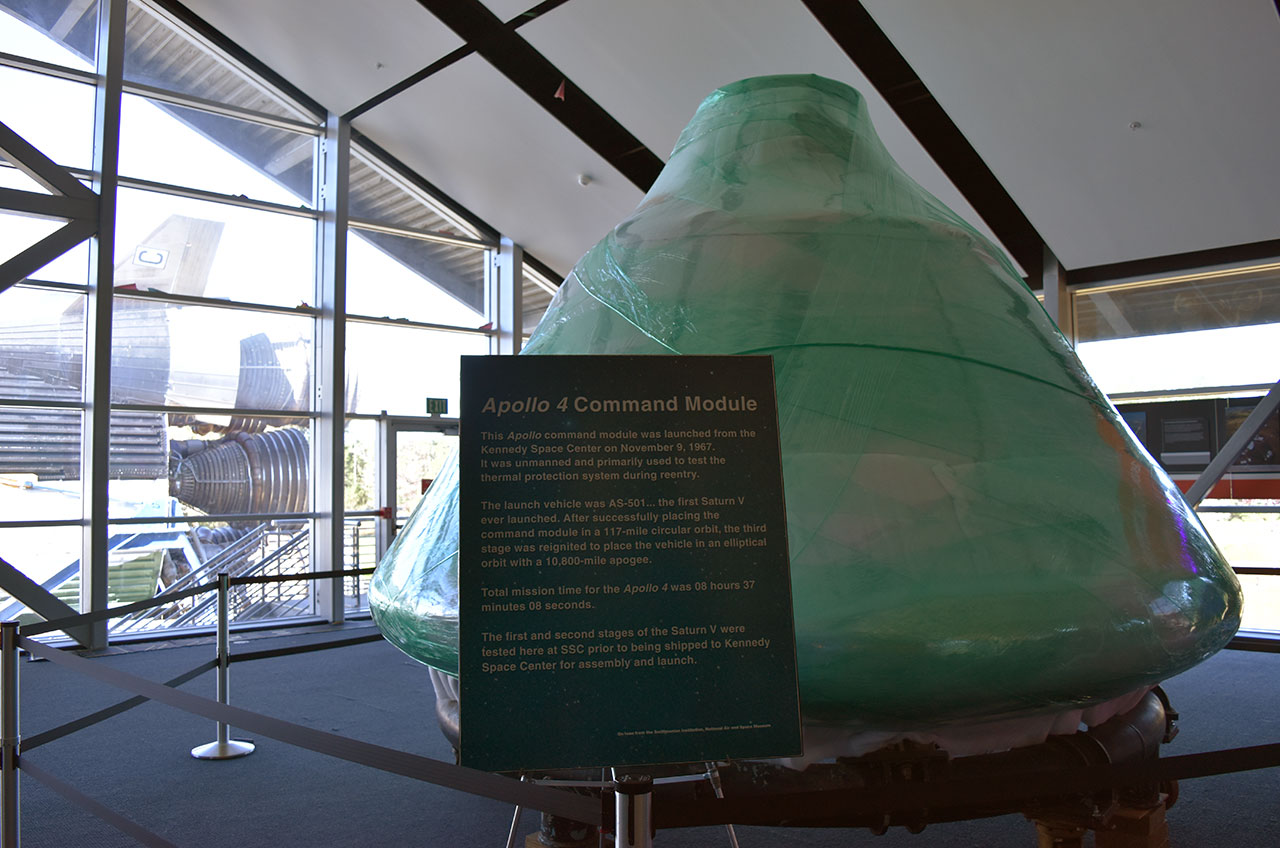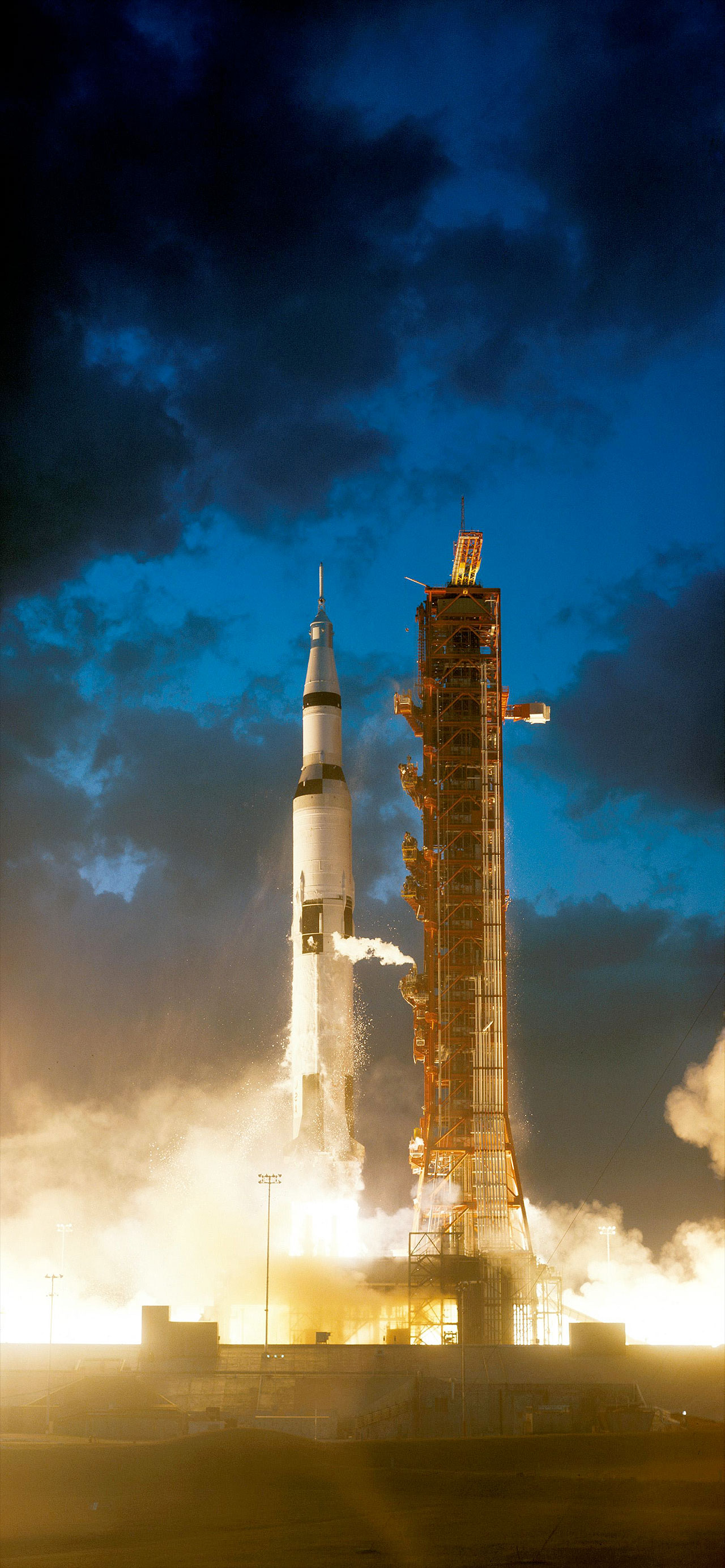Apollo 4 Capsule From 1st Saturn V Launch Lands at Infinity Science Center

The first Apollo spacecraft to launch atop a Saturn V rocket has landed in a new display, just in time for its trailblazing mission's 50th anniversary.
The Apollo 4 command module, which flew on the maiden flight of NASA's towering Saturn V rocket on Nov. 9, 1967, debuted at its new permanent home at the Infinity Science Center in Mississippi on Tuesday (Oct. 31). The spacecraft was moved from NASA's nearby Stennis Space Center on Sunday (Oct. 29) to join the displays at the space center's official visitor center.
"We are deeply honored to have the opportunity to display this priceless artifact of American space history," said John Wilson, executive director of the Infinity Science Center, in a statement. "By bringing the capsule to Infinity, our center is able to continue to tell the Apollo story to our 80,000 visitors each year and inspire future generations to dream big while reflecting upon the accomplishments of our past." [NASA Centers to Visit for an Out-of-This-World Vacation]
The Apollo 4 spacecraft is now exhibited in Infinity's Space Gallery, though still under wraps. The science center plans to build a glass structure to enclose and protect the artifact and add signage for its exhibition. The capsule's display is part of a large-scale redesign dedicated to celebrating and interpreting the accomplishments of the space program, as well as the science behind space exploration.
The Apollo 4 mission, also known as AS-501, was an "all-up" test of the rocket and spacecraft that would ultimately deliver 24 astronauts to the moon and back. The liftoff also marked the first launch from Pad 39A at NASA's Kennedy Space Center in Florida.
The sheer power of the Apollo 4 launch caught spectators by surprise, rattling the viewing stands at the press site 3.5 miles (5.6 kilometers) away.
"Oh, it's terrific, the building is shaking!" exclaimed Walter Cronkite, describing the launch from CBS's mobile studio, where they had to hold a large picture window from being blown in by the Saturn V's shockwave. "Look at that rocket go into the clouds at 3,000 feet! Oh the roar is terrific!"
Get the Space.com Newsletter
Breaking space news, the latest updates on rocket launches, skywatching events and more!
The Apollo 4 module — flying without a crew — soared to 11,234 miles (18,079 km) above the planet on its third orbit of Earth. The eight-hour, 36-minute and 59-second mission ended with the spacecraft re-entering Earth's atmosphere at almost 25,000 miles per hour (40,1000 k/ph), simulating a return from the moon, and splashing down northwest of Midway Island in the northern Pacific Ocean, where it was recovered by the USS Bennington.
The command module, a modified Block 1 spacecraft with the serial number 017, was equipped with a 70mm camera that captured imagery of Earth rotating below. The capsule also tested a heat shield coating, antenna designs, and a modified crew access hatch (the Apollo 4 mission was the first to fly after the loss of the Apollo 1 crew in a pad fire, in part due to the astronauts' inability to open the hatch).

NASA transferred the Apollo 4 capsule to the Smithsonian in January 1969. It was subsequently loaned back to the space agency for display at Stennis Space Center, where it was put on public view until early 2012. It did not immediately move to the Infinity Science Center that same year due to the new visitor center not having doors large enough to fit the 36.2-foot-tall by 12.8-foot-wide (11 by 3.9 m) artifact.
The command module entered the center on Sunday via a larger set of doors leading into a 3D immersive theater and educational area under construction. The Infinity partnered with Mammoet, a logistics company, to move the capsule.
The Apollo 4 command module joins another large Apollo-era artifact at the Infinity: NASA's last-assembled Saturn V rocket stage. The S-IC-15 stage, which was slated to fly on Apollo 19 until that mission was canceled in 1970, arrived at the science center for display in June 2016.
See more photos of the Apollo 4 command module at collectSPACE.
Follow collectSPACE.com on Facebook and on Twitter at @collectSPACE. Copyright 2017 collectSPACE.com. All rights reserved.
Join our Space Forums to keep talking space on the latest missions, night sky and more! And if you have a news tip, correction or comment, let us know at: community@space.com.

Robert Pearlman is a space historian, journalist and the founder and editor of collectSPACE.com, a daily news publication and community devoted to space history with a particular focus on how and where space exploration intersects with pop culture. Pearlman is also a contributing writer for Space.com and co-author of "Space Stations: The Art, Science, and Reality of Working in Space” published by Smithsonian Books in 2018.In 2009, he was inducted into the U.S. Space Camp Hall of Fame in Huntsville, Alabama. In 2021, he was honored by the American Astronautical Society with the Ordway Award for Sustained Excellence in Spaceflight History. In 2023, the National Space Club Florida Committee recognized Pearlman with the Kolcum News and Communications Award for excellence in telling the space story along the Space Coast and throughout the world.










